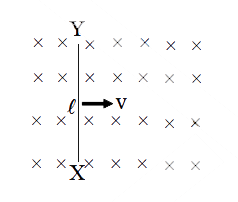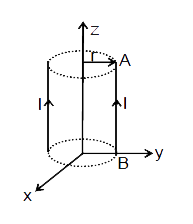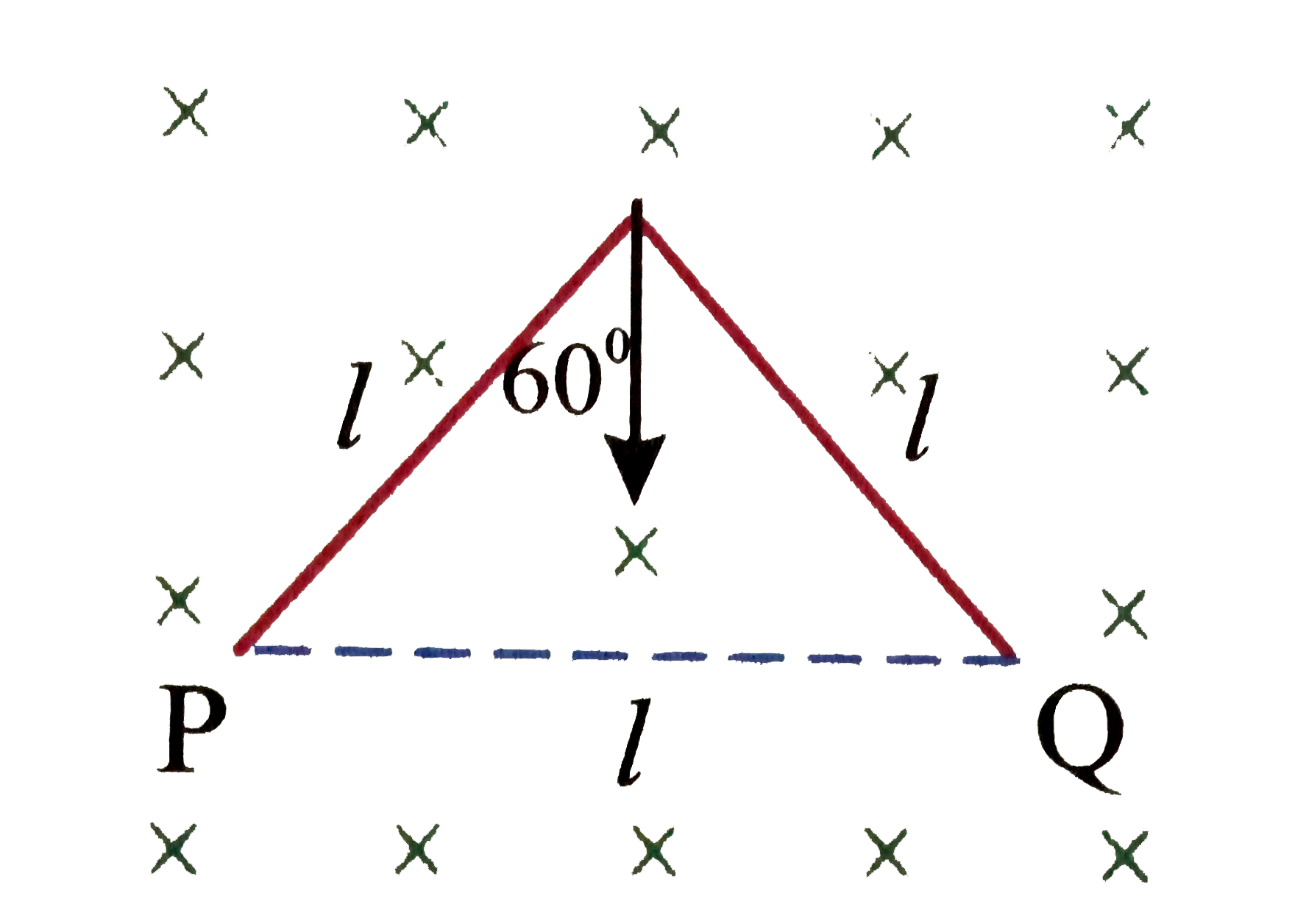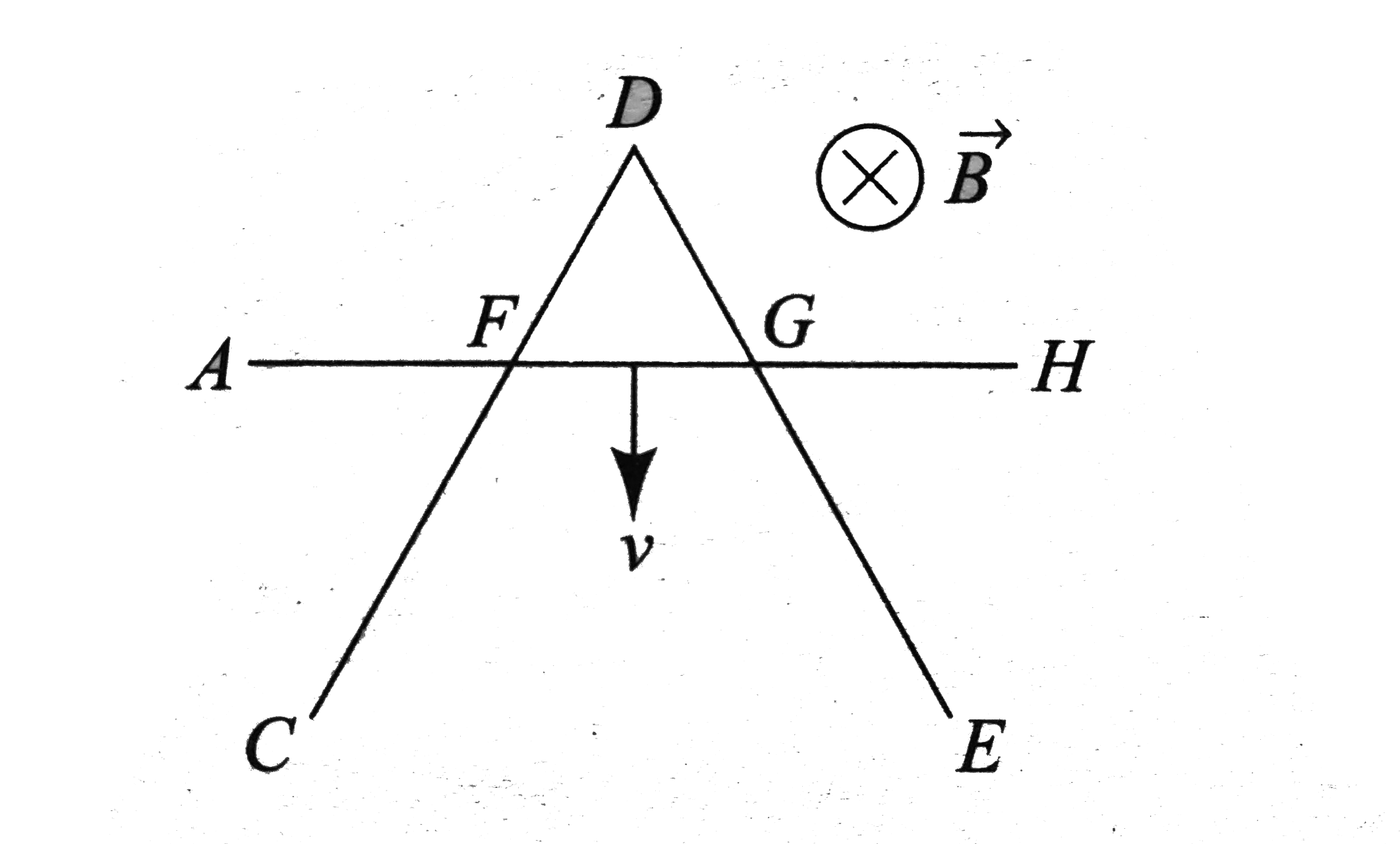What is the power required to move a conductor of length l having resistance r, with velocity v in a magnetic field B?
The correct Answer is:P=B2l2v2r
Step by step video, text & image solution for What is the power required to move a conductor of length l having resistance r, with velocity v in a magnetic field B? by Physics experts to help you in doubts & scoring excellent marks in Class 12 exams.
Topper's Solved these Questions
- BOOK - MODERN PUBLICATIONCHAPTER - ELECTROMAGNETIC INDUCTIONEXERCISE - REVISION EXERCISE (Additional Questions (Carrying I mark))11videos
ELECTROMAGNETIC INDUCTION
- BOOK - MODERN PUBLICATIONCHAPTER - ELECTROMAGNETIC INDUCTIONEXERCISE - REVISION EXERCISE (Fill in the blanks)7videos
ELECTROMAGNETIC INDUCTION
- BOOK - MODERN PUBLICATIONCHAPTER - ELECTROMAGNETIC INDUCTIONEXERCISE - HIGHER ORDER THINKING SKILLS AND ADVANCED LEVEL8videos
ELECTROMAGNETIC INDUCTION
- BOOK - MODERN PUBLICATIONCHAPTER - ELECTRIC CHARGES AND FIELDS EXERCISE - Chapter Practice Test15videos
ELECTRIC CHARGES AND FIELDS
- BOOK - MODERN PUBLICATIONCHAPTER - ELECTROMAGNETIC WAVESEXERCISE - CHAPTER PRACTICE TEST14videos
ELECTROMAGNETIC WAVES
Similar Questions
Knowledge Check
- Question 1 - Select One
A small conducting rod of length l, moves with a uniform velocity v in a uniform magnetic field B as shown in fig __
 AThen the end X of the rod becomes positively chargedBThe end Y of the rod becomes positively chargedCThe entire rod is unevenly chargedDThe rod becomes hot due to joule heating
AThen the end X of the rod becomes positively chargedBThe end Y of the rod becomes positively chargedCThe entire rod is unevenly chargedDThe rod becomes hot due to joule heating - Question 2 - Select One
Find the work and power required to move the conductor of length l shown in the fig. one full turn in the anticlockwise direction at a rotational frequency of n revolutions per second if the magnetic field is of magnitude B0 everywhere and points radially outwards from Z-axis. The figure shows that surface traced by the wire AB.
 A−2πrB0il,−2πrB0ilnB4πrB0il,4πrB0ilnC2πrB0il,2πrB0ilnD−4πrB0il,4πrB0iln
A−2πrB0il,−2πrB0ilnB4πrB0il,4πrB0ilnC2πrB0il,2πrB0ilnD−4πrB0il,4πrB0iln - Question 3 - Select One
If an electron is moving with velocity v produces a magnetic field →B, then
Athe direction of field →B will be same as the direction of velocity →v.Bthe direction of field →B will be opposite to the direction of velocity →v.Cthe direction of field →B will be perpendicular to the direction of velocity →v.Dthe direction of field →B does not depend upon the direction of velocity →v.
A wire of length 2l is bent at mid point so that the angle between two halves is 60∘. If it moves as shown with a velocity v in a magnetic field B find the induced emf.
 View Solution
View SolutionA square loop of a conducting material of side l and resistance r is dragged through a uniform magnetic field B with uniform velocity v keeping the plane of the loop perpendicular to the direction of the field. What is the current flowing through the loop?
View SolutionA long conducting wire AH is moved over a conducting triangular wire CDE with a constant velocity v in a uniform magnetic field →B directed into the plane of the paper. Resistance per unit length of each wire is ρ. Then
 View Solution
View SolutionThe magnitude of the earth's magnetic field at a place is B0 and angle of dip is δ. A horizontal conductor of lenth/lying along the magnetic north-south moves eastwards with a velocity v. The emf induced acroos the coductor is
View SolutionThe magnitude of the earth's magnetic field at the north pole is B0 . A horizontal conductor of length l moves with a velocity v . The direction of v is perpendicular to the conductor. The induced emf is
(i) zero, if v is vertical
(ii) B0lv , if v is vertical
(iii) zero, if v is horizontal
(iv) B0lv , if v is horizontalView Solution

